
Celtis laevigata is a medium-sized tree native to North America. Common names include sugarberry, southern hackberry, or in the southern U.S. sugar hackberry or just hackberry.

Banksia ser. Cyrtostylis is a taxonomic series within the plant genus Banksia. First published at sectional rank by George Bentham in 1870, it was demoted to a series by Alex George in 1981. The name has had three circumscriptions.

Prosopis laevigata, commonly known as smooth mesquite, is a species of flowering tree in the pea family, Fabaceae, that is native to Mexico, Bolivia, Peru, and north-western Argentina. In Mexico, the species is found in the nation's the central highlands, the lowlands of southern Tamaulipas, and in parts of Oaxaca, Morelos, Puebla, and Chiapas. It grows on a variety of sites on hillslides, in depressions, and along floodplains. It has been spotted growing in the Middle East as well.

The climbing mantella is a species of diurnal poison frog of the genus Mantella that resides in the subtropical regions of northeast Madagascar. Although it spends a significant amount of time in trees or bamboo forests, this frog species is not fully terrestrial and actively seeks areas with a water source.

Haliotis laevigata, common name the smooth Australian abalone or greenlip abalone or whitened ear shell, is a species of sea snail, a marine gastropod mollusk in the family Haliotidae, the abalones.
Georissa laevigata is a species of a land snail, a minute cave snail, gastropod mollusk in the family Hydrocenidae.
Chalicopoma laevigatum is a species of minute salt marsh snail with an operculum, a terrestrial gastropod mollusk, or micromollusk, in the family Assimineidae.
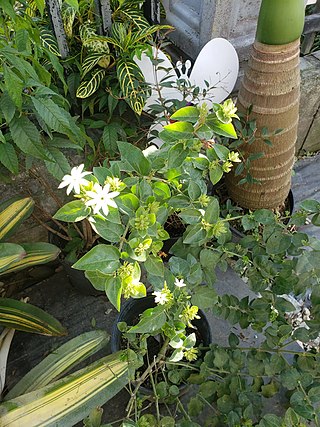
Buxus citrifolia is a species of plant in the family Buxaceae. It is found in Colombia, Panama, and Venezuela. This interesting shrub has not been known to occur in Central America, having only been collected and/or reported in Cuba, Puerto Rico, and Venezuela. Buxus citrifolia is nearly extinct and has been on the endangered list.

Santiria apiculata is a species of flowering plant in the family Burseraceae. It is found in Indonesia, Malaysia, the Philippines, and Singapore.
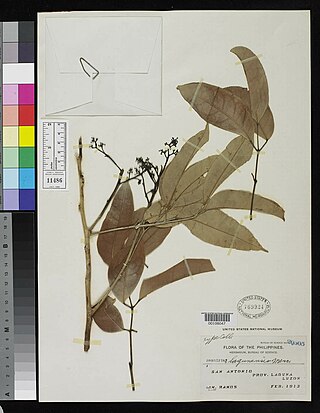
Santiria is a genus of plants in the family Burseraceae.
Santiria dacryodifolia is a species of plant in the family Burseraceae. It is a tree endemic to Borneo where it is confined to Sarawak.
Santiria griffithii is a species of plant in the Burseraceae family. It is found in Indonesia, Malaysia, and Singapore.
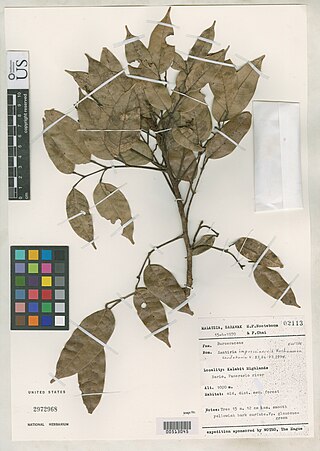
Santiria impressinervis is a species of plant in the family Burseraceae. It is endemic to the Kelabit Highlands in the Malaysian region of Sarawak on the island of Borneo.
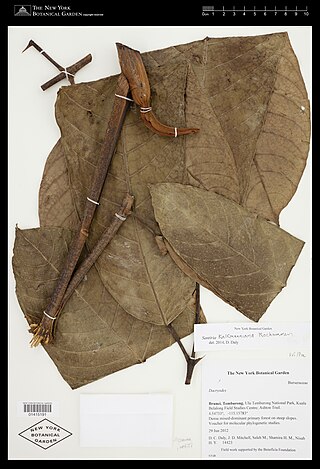
Santiria kalkmaniana is a species of plant in the family Burseraceae. It is a tree endemic to Borneo.
Santiria nigricans is a species of plant in the family Burseraceae. It is a tree endemic to Borneo where it is confined to Sarawak.
Santiria sarawakana is a species of plant in the family Burseraceae. It is a tree endemic to Borneo where it is confined to Sarawak.

Santiria tomentosa is a species of plant in the family Burseraceae. It is found in Indonesia, Malaysia, the Philippines, and Singapore.
Microsynodontis laevigata is a species of upside-down catfish endemic to Gabon where it is found in the Ivindo River. It was first described in 2004 by Ng Heok Hee.

Cryptocarya laevigata, known as the glossy laurel or red-fruited laurel, is a rainforest plant, which ranges from Malesia and New Guinea to eastern Australia. In Australia it grows in the rainforest understorey on fertile soils, from the Richmond River, New South Wales to Cairns in tropical Queensland, where it is often seen in association with the White Booyong.
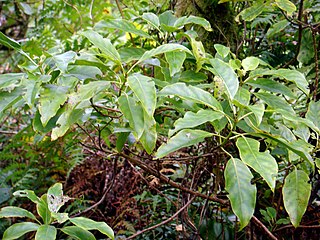
Coprosma laevigata, the Rarotongan coprosma, is a herbaceous plant, a member of the Rubiaceae family.














